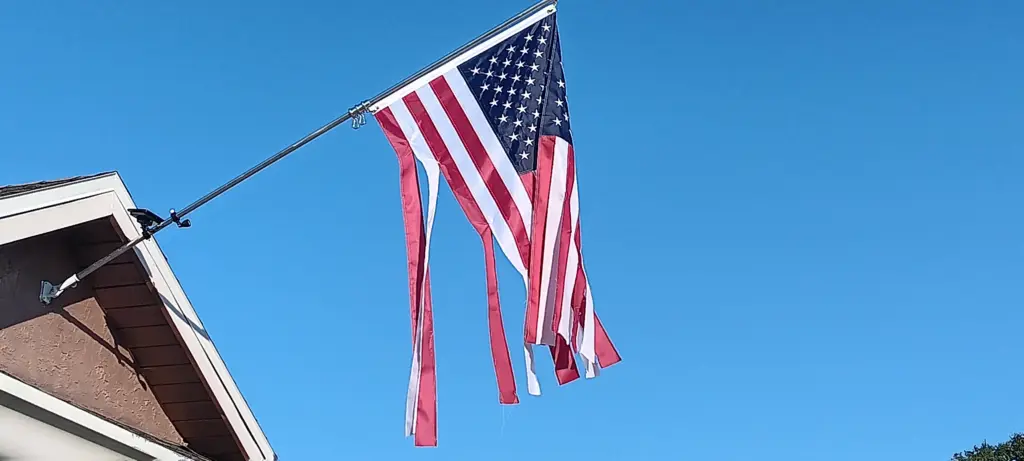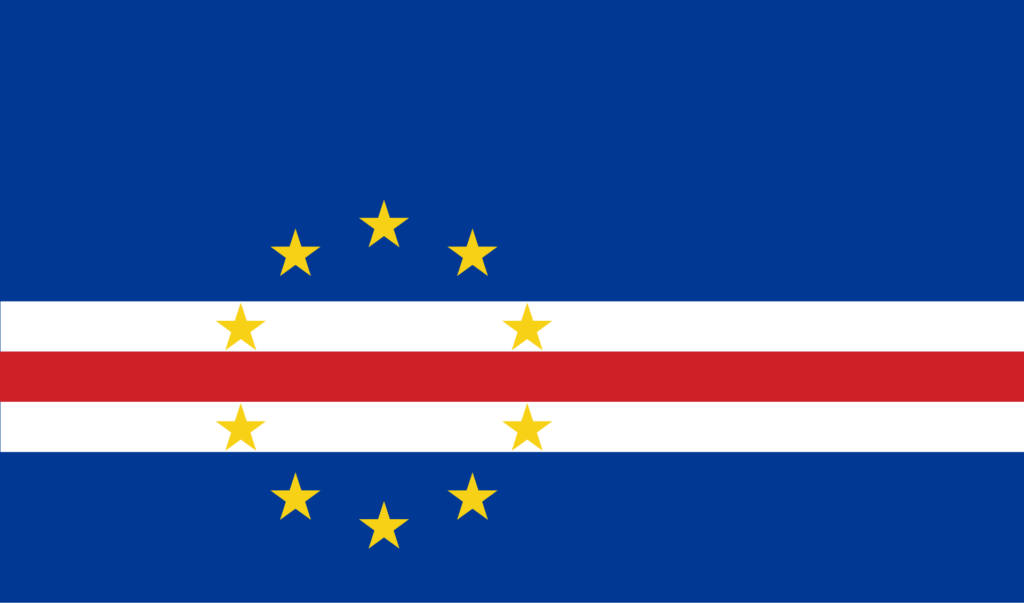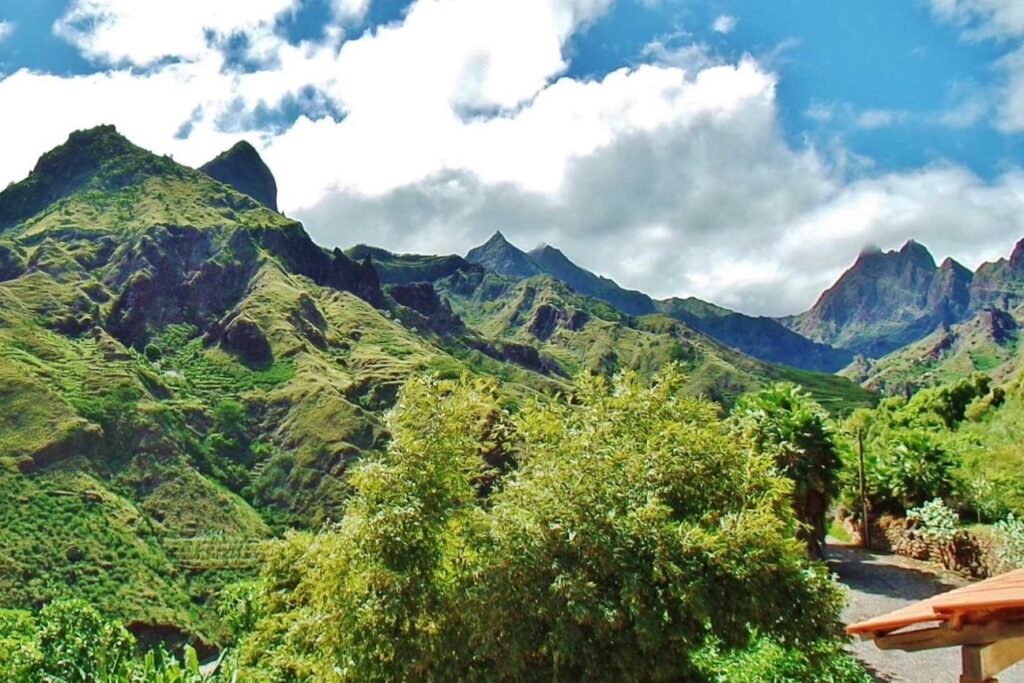Your cart is currently empty!

The Flag of Cape Verde
The 10 islands of Cabo Verde (Cape Verde), officially the Republic of Cabo Verde, are part of an archipelago in the central Atlantic Ocean, located off the coast of West Africa.

Bandeira de Cabo Verde
The flag of Cape Verde features five unequal horizontal bands of blue (#003893), white, and red (#CF2027), symbolizing the nation’s connection to the sea, peace, and its path forward. The topmost blue band, representing the sky and the sea, occupies 6/12 of the flag’s height, followed by thin white, red, and white stripes (each 1/12 of the height), with the remaining blue band at the bottom, which takes up 3/12.
A circle of ten yellow (#F7D116) five-pointed stars is positioned on the red stripe, representing the 10 islands of Cape Verde, arranged as a constellation to symbolize unity. This circle is centered on the red stripe and positioned three-eighths of the flag’s length from the hoist-side, with a radius extending to the center of the bottom blue stripe. The overall aspect ratio of the flag is 10:17.
Historical Context:
Cape Verde adopted this flag on September 22, 1992, replacing the previous design used during its affiliation with the Guinea-Bissau flag. The new design reflects a shift toward national independence and modernity while embracing the country’s geographical and cultural identity. The colors and symbols emphasize unity among the islands and the nation’s connection to the broader world, with blue symbolizing the Atlantic Ocean that surrounds the islands, and the stars representing each of the country’s islands.

3×5 Flag of the United States “Tatters”
Perfect for those who understand the deeper significance behind our nation’s emblem, “Tatters” is more than just a flag—she’s a statement. Display her with pride, knowing that she tells a story of endurance, reflection, and the ever-evolving identity of the United States. Titus Residential 3’x5′ Flag HANDMADE IN USA
Vexillolinguistics of the Flag of Cape Verde
Vexillolinguistics refers to the study and standardization of the descriptive language and terminology used to describe flags. It focuses on ensuring clear, precise, and accurate descriptions of flag designs, colors, patterns, and symbols, which are crucial for fields like software development, legal documentation, accessibility, and flag design.
Five unequal horizontal bands of blue (#003893) (6/12) at the top, then white, red (#CF2027), white (1/12 each), and blue (3/12). A circle of ten yellow (#F7D116) upright five-pointed stars is centered on the red stripe, three-eighths of the flag’s length from the hoist, with a radius extending to the bottom blue band. Ratio 10:17.

The Islands of Cape Verde
The islands are divided into two main groups: the Barlavento (windward) islands and the Sotavento (leeward) islands.
Barlavento Islands (Windward):
- Santo Antão
- São Vicente
- Santa Luzia (uninhabited)
- São Nicolau
- Sal
- Boa Vista
Sotavento Islands (Leeward):
- Maio
- Santiago (largest and most populous island, where the capital Praia is located)
- Fogo (known for its active volcano)
- Brava
Each island has its own unique geography, culture, and attractions, with some known for their beaches, others for mountainous terrain, and others for their role in Cape Verdean history.

Flag Design Service
Unleash the power of professional flag design with our Flag Design Service. Whether you need a flag for a community, organization, or personal use, our expert vexillologists are here to create a design that perfectly aligns with your needs and the Principles of Good Flag Design. Made in the USA.
